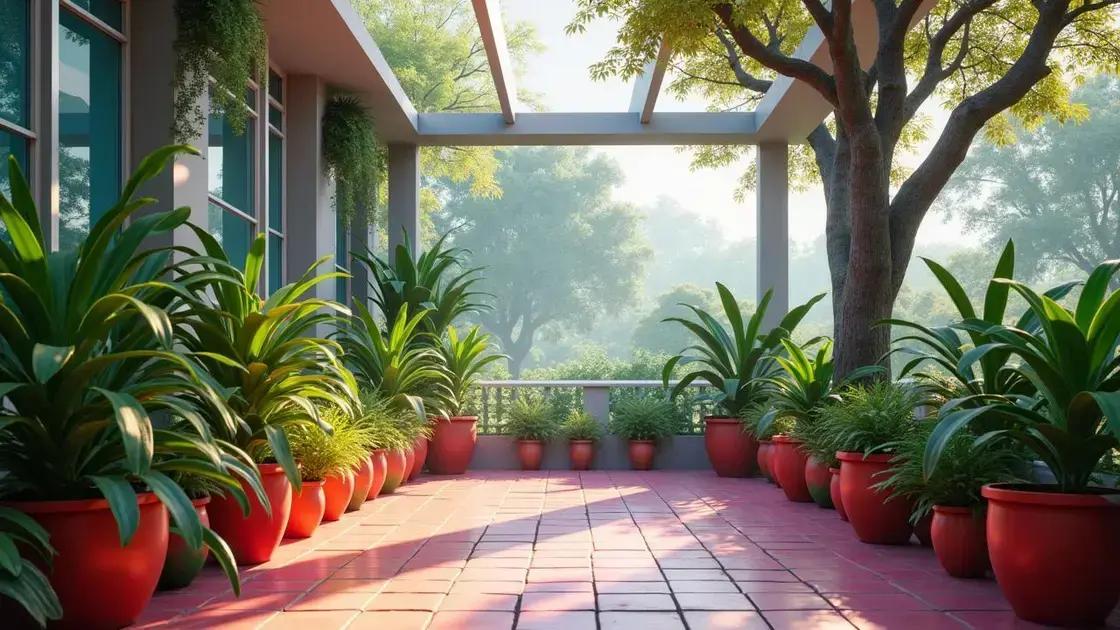How to Take Care of Plants in Pots: 7 Tips for Thriving Greenery
How to take care of plants in pots? This question often arises for both novice and seasoned gardeners alike. It’s not just about filling a container with soil and sticking a plant inside. The choice of pot, type of soil, and watering habits play crucial roles in the health of your plants. Each detail matters, leading us to discover effective techniques to ensure your potted plants thrive beautifully.
Table of Contents
ToggleEssential watering strategies for potted plants
How to take care of plants in pots? One of the most vital aspects is understanding the watering strategies that lead to thriving greenery. Proper watering ensures that your plants receive the nutrients they need while preventing overwatering and root rot. Here are some essential techniques to help you master this critical task.
Understanding your plants’ needs
Different plants have varying water requirements. Here are some factors that influence the watering schedules:
- Plant type: Succulents need less water than ferns.
- Season: Plants may require more water during their growth phase in spring and summer.
- Container size: Larger pots hold more soil and retain moisture longer than smaller ones.
Watering techniques to try
Implement these effective watering techniques for your potted plants:
- Check the soil moisture: Before watering, finger-test the soil; if it feels dry up to your first knuckle, it’s time to water.
- Water thoroughly: Ensure the water penetrates deep into the soil, reaching the roots.
- Use pots with drainage holes: Always choose containers that allow excess water to escape, preventing waterlogging.
- Watering frequency: Adjust your schedule based on the plant’s needs and environmental conditions, typically once every 1-2 weeks.
Signs of overwatering
Be vigilant of the signs indicating that you might be overwatering:
- Yellowing leaves
- Wilting despite wet soil
- Mold or fungi on the soil surface
Common questions about watering potted plants
Here are some concise answers to common inquiries:
- How often should I water my potted plants? Generally, every 1-2 weeks, but this may vary based on species and climate.
- Can I use tap water for my plants? Yes, but let it sit for 24 hours to allow chlorine to dissipate.
To enhance your knowledge further, consider exploring indoor gardening techniques that can provide insights into maintaining healthy, thriving plants.
Final thoughts
Mastering the art of watering your potted plants involves observing their specific needs and making adjustments. With practice and patience, you’ll soon see the rewards of your efforts manifested in lush, vibrant plants.
Choosing the right potting soil for optimal growth

Choosing the right potting soil for optimal growth is crucial for the health of your plants. The soil you select affects drainage, nutrient availability, and overall growth. Here are some guidelines to help you make the best choice.
Types of potting soil
Understanding the different types of potting soil will give you insight into what works best for your plants:
- All-purpose potting mix: Versatile and suitable for most houseplants.
- Seed starting mix: Lightweight mix ideal for germinating seeds.
- Cactus mix: A well-draining blend specifically for succulents and cacti.
- Organic potting soil: Made from natural materials, enhancing soil fertility without synthetic chemicals.
Key ingredients to look for
When selecting potting soil, consider these essential components:
- Peat moss: Helps retain moisture while providing aeration.
- Perlite or vermiculite: Increases drainage and aeration in the soil.
- Compost: Enriches the soil with nutrients and beneficial microbes.
- Coir: A sustainable alternative to peat, offering moisture retention and aeration.
Common questions about potting soil
Here are concise answers to some frequent questions:
- How often should I replace my potting soil? It’s best to refresh it every 1-2 years or when it shows signs of compaction.
- Can I use garden soil in pots? Garden soil is not recommended for potted plants as it may cause drainage issues.
Enhance your gardening knowledge by exploring indoor gardening techniques that provide insights on various plant care strategies.
Conclusion on potting soil selection
The right potting soil is essential for providing your potted plants with a conducive environment for growth. By understanding soil types and key ingredients, you can ensure healthy, thriving plants.
Maintaining healthy indoor and outdoor potted plants
Maintaining healthy indoor and outdoor potted plants is essential for keeping your greenery vibrant and thriving. Proper care and attention ensure your plants remain healthy, contributing to a flourishing home or garden.
Essential care tips for indoor plants
Here are some practical steps to help keep indoor plants in great condition:
- Light conditions: Ensure plants get adequate natural light according to their specific needs.
- Regular watering: Monitor soil moisture and water as needed, avoiding both under and overwatering.
- Humidity levels: Increase humidity for tropical plants by misting or using a humidity tray.
- Cleaning leaves: Dust leaves periodically with a damp cloth to allow optimal photosynthesis.
Guidelines for outdoor potted plants
Outdoor plants require specific considerations to thrive:
- Sun exposure: Choose a spot that provides the right amount of sunlight – full sun, partial shade, or full shade as required by the plant.
- Weather protection: Shield vulnerable plants from extreme weather conditions like frost or excessive heat.
- Fertilization: Feed outdoor potted plants during their growing season with a balanced fertilizer.
Common questions about plant maintenance
Here are quick answers to some frequent queries:
- How often should I fertilize my potted plants? Typically, every 4-6 weeks during the active growing season.
- What are signs of unhealthy plants? Look for yellowing leaves, stunted growth, or drooping foliage.
For further insights, consider exploring indoor gardening techniques to deepen your plant care knowledge.
Conclusion on plant health maintenance
Maintaining healthy indoor and outdoor potted plants requires a proactive approach. By understanding their specific needs and providing appropriate care, your plants can flourish beautifully.
In conclusion
Maintaining healthy indoor and outdoor potted plants is a rewarding journey that enhances your living space and contributes to your overall well-being. By implementing essential care tips—from selecting the right potting soil to establishing an effective watering routine—you empower your plants to thrive. Remember to observe their specific needs and adapt your care methods accordingly. For additional guidance, check out these tips on enhancing your indoor garden to cultivate an even more vibrant collection of plants.

